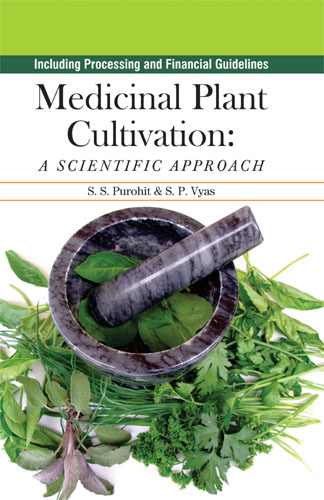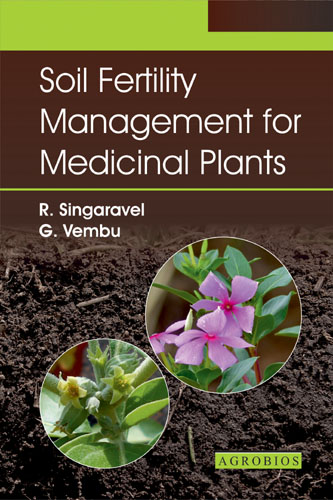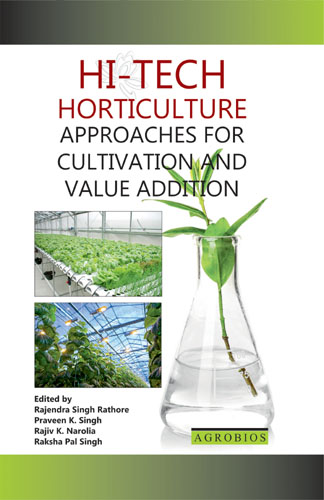A Handbook Of Aromatic And Essential Oil Plants: Cultivation, Chemistry, Processing And Uses
The diffusing fragrance and flavour of plants have been utilized world over for herbal medicines, pharmaceuticals, perfumery, aromatherapy and culinary purposes. The demand for plant based therapeutics has increased immensely in both developing and developed countries due to growing recognition that they are natural products, being non-narcotic, having no side-effects and easily available at affordable prices since some of the aromatic plant species have the unique capability to grow under low tility, rainfed conditions and salinity effected soils with low inputs, therefore scientific cultivation of aromatic plants can became an important tool for socio-economic development of rural masses and it can also provide green health alternatives in the form of eco-friendly products.
Plants produce a range of bioactive compounds and are sources of large number of useful chemicals like alkaloids, steroids, flavonoids, hormones, phenols, tennins and many other compounds. Essential oils obtained from aromatic plants by distillation expression or extraction with suitable organic solvents represents a complex mixture of several compounds. A vast majority of essential oils, however are constituted by mixtures of volatile monoterpenes and sesquiterpenes.
Among the four lakh plant species in the world, essential oils are found in a small number of only about 2000 species belonging to 60 families. Depending upon the botanical species, the volatile oils in these plants are stored and preserved in roots, leaves, seeds, bark, fruits, flowers and stem which may be emitting characteristic odour in their surroundings. The odour associated with the plant parts, has given rise to the age old perfumery traditions and over the years, the essential oils extracted from these plants have become precious and indispensable ingredients of fragrance, pharmaceuticals and flavour. These plant products are greatly utilized in confectionary, food, condiments, dental creams, mouth washes, soaps etc.
The arrangement of the chapters is aimed to describe the fundamental and basic issues of aromatic and essential plants. The book provides information on various aspects of Aromatic and Essential plants, aromatherapy, evaluation of new aromatic plants, chemistry and phytochemistry of essential oils and aroma, essential oils, various preparations from medicinal aromatic plants, extraction technologies for medicinal aromatic plants in First Section. The Second Section of the book includes the complete description of individual plant with its botanical status, uses, chemistry, cultivation, extraction methods, etc. The Third Section of the book presents the short description of about 307 plants in the form of Directory.
Bedi S
555
Table of Contents..
SECTION I: AROMATIC AND ESSENTIAL OIL PLANTS: GENERAL INTRODUCTION
- Aromatic Plants: An Introduction
- Aromatherapy
- Perfumery
- Chemistry and Phytochemistry of Essential Oils and Aroma Compounds
- Essential Oils
- Preparations from Medicinal Aromatic Plants
- Extraction Technologies for Medicinal Aromatic Plants
SECTION II: AROMATIC AND ESSENTIAL OIL PLANTS: CULTIVATION, USES AND EXTRACTION
- Allium sativum Linn. (Garlic)
- Andropogon sp. (Lemon Grass)
- Apium graveolens Linn. (Celery)
- Cinnamomum sp. (Cinnamum)
- Citrus sp. (Lemon, Lime)
- Coriandrum sativum L. (Coriander)
- Curcuma angustifolia Roxb. (Tikhur)
- Cymbopogon martinii Roxb. (Palmarosa)
- Elettaria cardamomom Maton
- Eucalyptus sp
- Foeniculum vulgare Miller
- Jasminum sp. (Jasmine)
- Juniperus virginiana L. (Cedarwood)
- Lawsonia inermis (Hina)
- Mentha arvensis Linn (Mint)
- Myristica fragrans Houtt (Nutmeg)
- Ocimum basilicum L. (Tulsi)
- Pandanus sp. (Kewra)
- Pimpinella anisum Linn. (Anise)
- Piper longum Linn. (Pipli)
- Piper nigrum (Pepper)
- Pogostemon cablin (Blanco) Benth (Patchouli)
- Rosa sp. (Gulab)
- Rosmarinus officinalis (Rosemary)
- Syzygium aromaticum L. (Clove)
- Tagetes minuta (Wild Marigold)
- Valeriana hardwickii (Tagar)
- Vetiveria zizanioides L. (Khus-Khus)
- Zingiber officinale Rose (Ginger)
SECTION III: DIRECTORY: AROMATIC AND ESSENTIAL OIL PLANTS
Table of Contents..
1.
Book Details
Book Title:
A Handbook Of Aromatic And Essential Oil Plants: Cultivation, Chemistry, Processing And Uses
A Handbook Of Aromatic And Essential Oil Plants: Cultivation, Chemistry, Processing And Uses
Book Type:
HANDBOOK
HANDBOOK
No Of Pages:
632
632
Color Pages :
0
0
Color Pages :
0
0
Book Size:
CROWN QUARTO (7.5X10)
CROWN QUARTO (7.5X10)
Weight:
1300 Gms
1300 Gms
Copyright Holder:
All Right Reserved
All Right Reserved
Imprint:
M/s AGROBIOS (INDIA)
M/s AGROBIOS (INDIA)
Readership:
ENTREPRENEURS | EXTENSION WORKERS | FIELD WORKERS | GENERAL READERS | PG STUDENTS | SCIENTISTS AND RESEARCHERS | UG STUDENTS |
ENTREPRENEURS | EXTENSION WORKERS | FIELD WORKERS | GENERAL READERS | PG STUDENTS | SCIENTISTS AND RESEARCHERS | UG STUDENTS |
Associated Subjects:
General Agriculture , Horticulture , Medicinal And Aromatic Plants , Medicinal & Aromatic Plants , Pharmacutical Sciences , Agribusiness ,
General Agriculture , Horticulture , Medicinal And Aromatic Plants , Medicinal & Aromatic Plants , Pharmacutical Sciences , Agribusiness ,




















